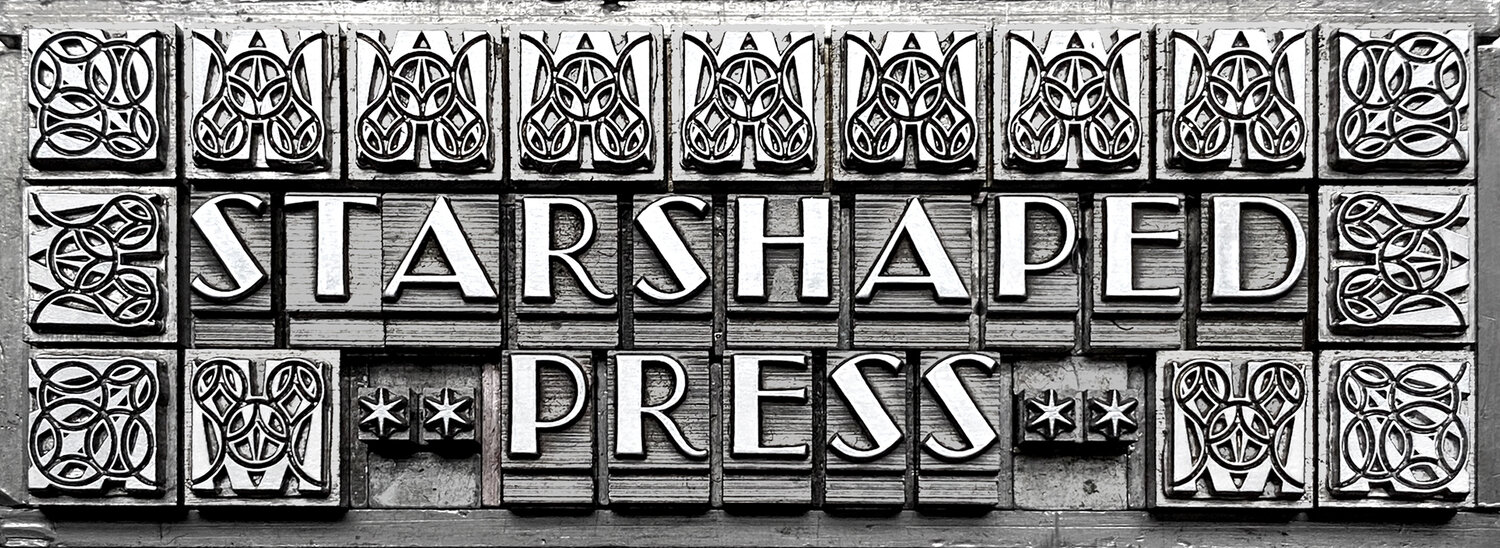This WP post is by special guest contributor, Amelia Hugill-Fontanel.
Wood type makes type nerds happy—novices and aficionados alike! These shop-worn, vintage, and often decorative characters offer freedom from typographic tightness in letterpress design. In display sizes from 4-line (48 pt.) to 40-line (480 pt.), wood type designs fuel the imagination for Wild West “wanted” posters and circus billboards for fantastic feats. Now wood type is the source of diverse expression in letterpress printmaking.[1] Wood type was first manufactured in large quantities in the early quarter of the 1800s, and continued on that scale into the mid-20th century.[2] A few 21st century artisans are making wood type today using fine analog craftsmanship and digital tools.[3] If you are lucky to get yer paws on some vintage wood type, you are now the custodian of a dwindling resource. Let me advise you on how to clean it up, so it can be a source of inspiration in your printshop for many decades to come.
RIT Graphic Design students in a letterpress printmaking class. Photo by A. Sue Weisler, 2019.
I am a curator who prints at the RIT Cary Graphic Arts Collection—a rare book library with letterpress super powers. In addition to collecting books and archives on the history of printing and its related fields like typography and book arts, the Cary runs a working letterpress print shop with some 30 vintage presses and thousands of fonts of type. My coworkers and I preserve this equipment through use in classes, demos, and our own editions of posters, cards, and booklets.
Cleaning wood type needs only a few simple tools: rags, cotton swabs, the cleaning cream, scrap paper, the type—and some elbow grease. Photo by Daeya Shealy.
A few years ago, a donor gave the Cary a large collection of vintage wood type: like some 150 fonts! It was thrilling to enhance the collection with all these designs. However, the type had been stored in a barn and was dirty from years of disuse. The sheer volume of thousands of dusty characters was too much for me to catalogue by myself. To help me clean the type and describe it, I have been crowd-sourcing the types’ restoration by inviting volunteers to clean up their own “adopted” font, and then learn how to letterpress print a poster type specimen. This process, which is like a mini-apprenticeship, is known at RIT as “Adopt-A-Font.” Adopt-a-Font has been positive on many levels: a collection is being restored and volunteers are gaining hands-on knowledge about the art and craft of letterpress printing.[4]
Hey, I made a video of the whole Adopt-a-Font shebang![5] But for those of you who want the CliffsNotes, stick to these points when cleaning your wood type.
● Supplies: wood type, rags, shop towels, or paper towels, cotton swabs, gloves, something to cover a table like cardboard or a dropcloth
● Cleaning product: non-abrasive mechanics’ creme hand cleaner like Permatex, Gojo, or Goop. NO GRIT can be in the cleaner like pumice or microbeads, and don’t use a citrus cleaner. These will damage the irreplaceable type.
Mechanic’s creme hand cleaners without pumice can be used to restore wood type.
● Place: Ventilation is a good idea for this dirty work. I like to do this outside in the summer or in the shelter of a garage.
● Method: Dip your rag into a small amount of cleaner and wipe the 6 sides of the type. The loose dirt and dust will come off. No scrubbing is necessary. The type will never look brand new. It just needs to be debris-free for good printing.
● If the creme pools in a recessed area of the character, wipe it out with a cotton swab. Don’t use a pointed tool which may scratch the type.
● Organize & Store: Sort your cleaned type into an alphabetical font. You may wish to count characters, note its manufacturer, and typeface family style, and then pull a type specimen print for reference.
● Place it in a box or typecase for storage. Those wooden soldiers will be ready for your next print job!
Many hands make light “dirty” work when cleaning wood type!
Send me a note about your wood type cleaning experience. Or tag @ritcarycollection if you found our method helpful. I am always open to new approaches to restore artifacts from our shared American printing history. Plus I’d love to see your shiny, newly-cleaned wood type!
[1] Check out creative techniques in international printmaking using a range of letterpress matrices, including the use of wood type, at the Hamilton Wood Type & Printing Museum’s annual juried exhibition called “New Impressions.”
[2] The most comprehensive blog on the history of wood type is David Shield’s Wood Type Research.
[3] I have purchased expertly-crafted modern wood type fonts and ornaments from Virgin Wood Type in New York; Moore Wood Type in Ohio; Petrescu Press in Romania.
[4] Check out how an RIT professor had her interactive design students adopt fonts and then create websites about them: Nancy Bernardo, “Adopt-a-Font Condensed,” TypeCon2015: Condensed in Denver, Colorado. https://vimeo.com/143575566
[5] Amelia Hugill-Fontanel, “Adopt-a-Font: Restoring Wood Type,” RIT Cary Graphic Arts Collection, YouTube, March 2021. https://youtu.be/8lVwJY5JQiY





